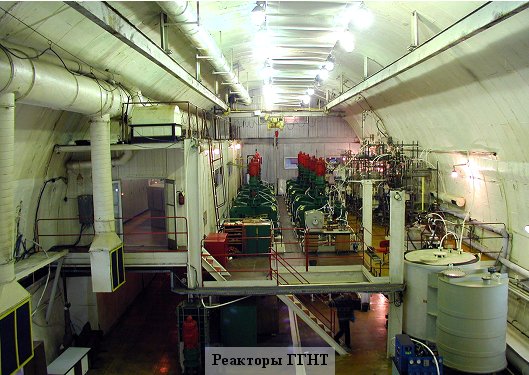BEST experiment: Cr-51 intense neutrino source was developed
News, 08 July 2019
“On 5 July 2019, at 2:02 PM Moscow time, the source of electron neutrinos 51Cr with the total activity of 3.2 MCi was placed into the radiation channel of the two-zone detector in the deep-underground laboratory “Gallium-germanium Neutrino Telescope of the Baksan Neutrino Observatory” of the Institute for Nuclear Research RAS (GGNT INR RAS),” Head of the GGNT INR RAS scientific group Vladimir Gavrin informed.
The first extraction is planned for Monday, 15 July 2019. The first results of the BEST experiment, the data acquisition in which will take three months only, are expected to be published in 2020.
The GGNT, which is the basic facility of the BEST (Baksan Experiment on Sterile Transitions), is aimed to measure solar neutrino fluxes. Measurements of solar neutrino fluxes will allow obtaining unique information about both thermonuclear reactions behaviour in central areas of the Sun and new neutrino properties. The GGNT is one of the deepest underground laboratories of the world.
G. V. Trubnikov provided invaluable assistance in the development of this unique artificial neutrino source with the intensity of 3.2 MCi. We wish further success to our colleagues in Baksan! JINR Director Academician V. A. Matveev
BEST (Baksan Experiment on Sterile Transitions) is a large-scale international scientific experiment on search for so-called sterile neutrinos with a mass of 1 eV s. These are so-called new particles the dark matter may evolve from.
The BEST experiment will help to answer the question about the existence of the fourth type of neutrinos – sterile ones (in addition to electron, tau- and muon) – in nature. Over the last several years, after obtaining new “anomalous” results in experiments on the study of neutrino oscillations (transition of neutrinos from one type into another) and correction of the cosmological data, this theme gained new momentum. Defining of neutrino properties is important not only for building a complete model of particle physics but for understanding the evolution of the Universe. Radioactive isotope 51Cr is the source of so-called electron neutrinos necessary for the BEST experiment.
The BEST collaboration includes 26 researchers representing 15 scientific organizations of Russia, Germany, the USA, Canada, and Japan. The Russian scientific organization INR RAS plays a leading role in the collaboration.
